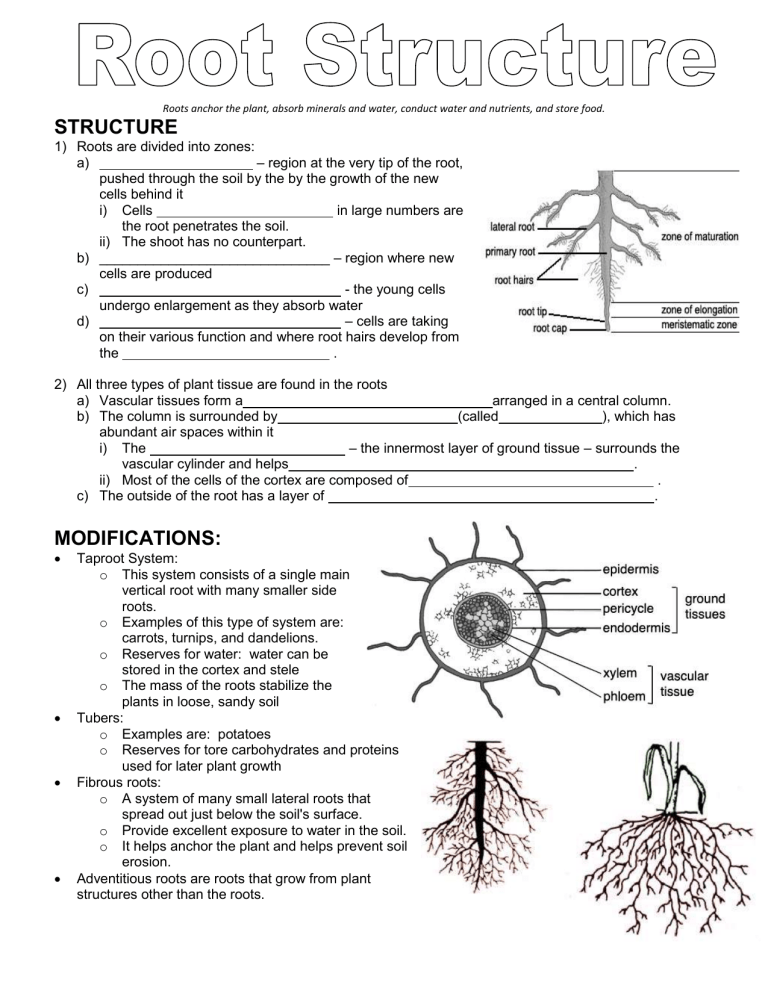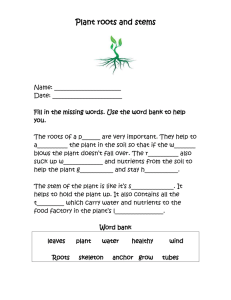
Roots anchor the plant, absorb minerals and water, conduct water and nutrients, and store food. STRUCTURE 1) Roots are divided into zones: a) – region at the very tip of the root, pushed through the soil by the by the growth of the new cells behind it i) Cells in large numbers are the root penetrates the soil. ii) The shoot has no counterpart. b) ______________________________ – region where new cells are produced c) - the young cells undergo enlargement as they absorb water d) – cells are taking on their various function and where root hairs develop from the . 2) All three types of plant tissue are found in the roots a) Vascular tissues form a arranged in a central column. b) The column is surrounded by (called ), which has abundant air spaces within it i) The – the innermost layer of ground tissue – surrounds the vascular cylinder and helps . ii) Most of the cells of the cortex are composed of . c) The outside of the root has a layer of . MODIFICATIONS: Taproot System: o This system consists of a single main vertical root with many smaller side roots. o Examples of this type of system are: carrots, turnips, and dandelions. o Reserves for water: water can be stored in the cortex and stele o The mass of the roots stabilize the plants in loose, sandy soil Tubers: o Examples are: potatoes o Reserves for tore carbohydrates and proteins used for later plant growth Fibrous roots: o A system of many small lateral roots that spread out just below the soil's surface. o Provide excellent exposure to water in the soil. o It helps anchor the plant and helps prevent soil erosion. Adventitious roots are roots that grow from plant structures other than the roots.



